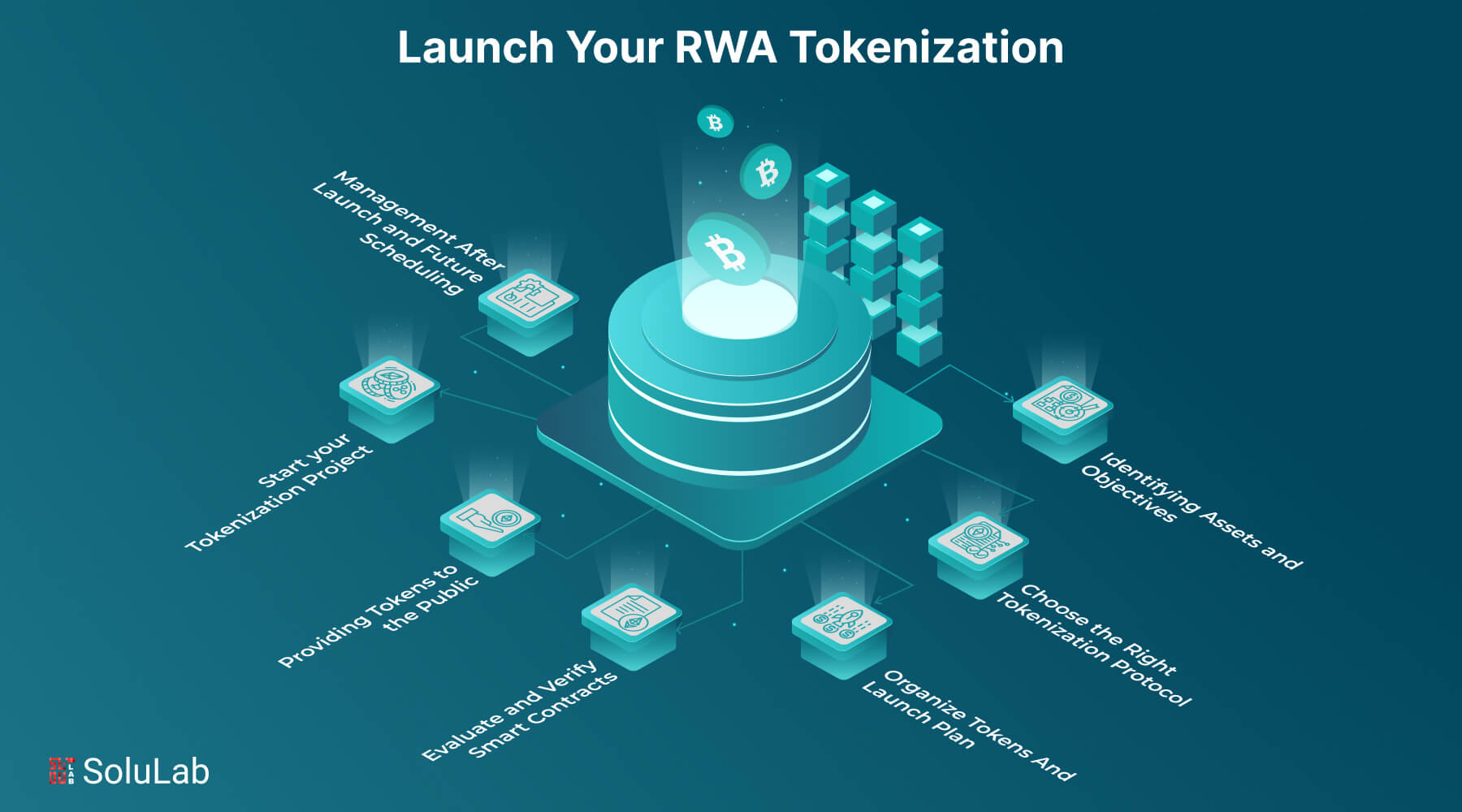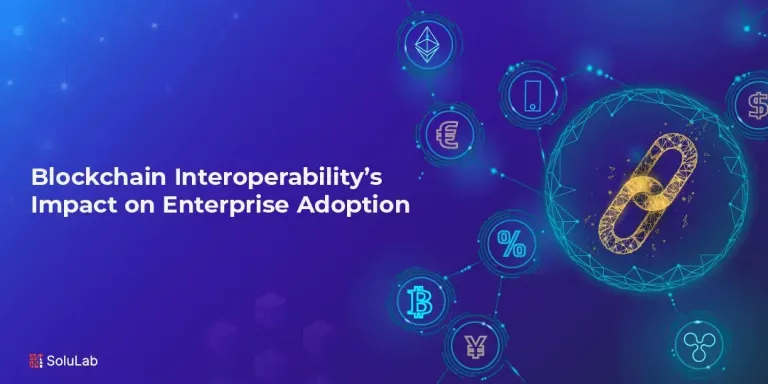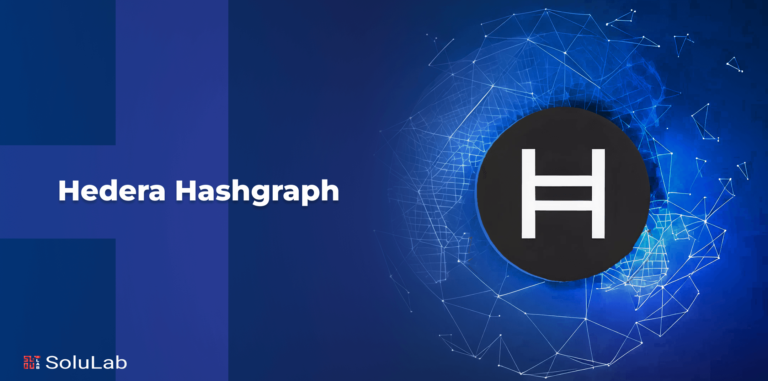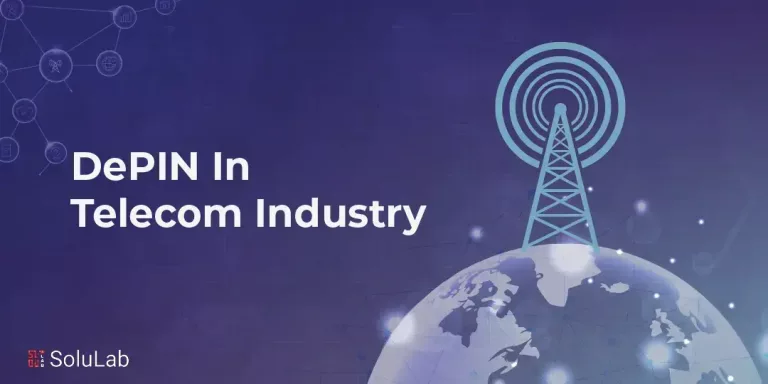
The market value of within the chain RWAs has increased by over $12 billion, according to a recent binance research analysis. The tokenized assets market might soar to an incredible $16 trillion by 2030. Real-world asset tokens have been accumulating momentum over the last few months, indicating a significant change in market attitude.
Want to start with RWA tokenization? It is not as difficult as it sounds, SoluLab is an expert in simplifying the process. Among others, SoluLab can arrange things such as that you could maybe start your real-world assets tokenization project in only 7 days, that too successfully. This article will cover all the necessary details about what is RWA tokenization, why is it beneficial, how to launch RWA tokenization with SoluLab within 7 days, and what the major issues that need to be addressed properly.
What is RWA Tokenization?
Tokenized Real-World Assets are digital tokens based on blockchain technology that stand in for conventional and tangible financial assets like cash, commodities, stocks, loans, artwork, and property rights. The ability to access, trade, and manage RWAs has altered significantly with their tokenization. RWA tokenization is still in its early days, it is expanding outside the realms of bonds, stocks, and real estate. Other businesses including playing games, power, collectibles, and could be more affected.
With the introduction of Tether (USDT) in 2014, stablecoins that are supported by monetary currencies are among the first types of RWAs. The US-dollar-denominated Tether cryptocurrency, which is intended to constantly value at $1, opened the door for the development of the stablecoin market which is now worth over $150 billion.
The tokenization of real-world assets comprises a certain procedure. Here is the breakdown of ways to help you better understand how to tokenize a real-world asset:
1. Selecting the actual RWA tokens that need to be tokenized in the real world.
2. Establishing the kind of token be it fungible or non-fungible, and the type of token standard to be applied such as ERC20 or ERC721 with other essential details of the token.
3. Selecting an open or personal tokenization blockchain system to issue the tokens. The tokenized RWA can be accessed on any blockchain by integrating CCIP.
4. The majority of tokenized assets need exceptional off-chain data from dependable and safe Chainlink oracles. To provide user transparency, the assets supporting RWA tokens must be verified by a verification service.
Why Should You Tokenize?
This tokenization of assets provides a response based on efficiency and accessibility. Fractional ownership is made possible by the tokenization of assets, allowing investors to buy tiny interests in valuable assets. This makes investing within real-world assets crypto opportunities that would reach for the typical investor. Furthermore transactions using blockchain technology will be quick, transparent, and safe without the usual paperwork and bureaucracy involved in asset trading.
With the utilization of chainlink CCIP’s cross-chain capabilities in the blockchain ecosystem, tokenized assets enhance market liquidity for assets that are often illiquid by providing globally accessible liquidity conditions. Furthermore, by providing a more precise evaluation of leverage and risks across the system, the on-chain representation of such assets guarantees transparency and makes auditable asset management easier. These major reasons contribute to the reduction of systematic risks. Also by having access to applications that are blockchain-based, RWAs increase the possible user base for a variety of asset types.
How To Start With SoluLab?
When it comes to the fast-moving world of banking, speed does matter. We’ve mastered the art of initiating RWA tokenization initiatives and how to launch RWA tokenization within 7 days here at Solulab:
Day 1: Identifying Assets and Objectives
Establishing your objectives and deciding which assets to tokenize is the first and foremost important stage in starting the RWA tokenization project. This includes deciding on the kind of assets you will have, the token structure, and your long-term goals.
1. Determine Which Asset Should Be Tokenized
The first step that would define the whole tokenization process is the RWA tokenization is the selection of the target asset. The following assets are perfect for tokenization.
- Home and office, or any type of property.
- Silver and gold that come under precious metals.
- Art (statues, pictures, and so forth).
- Commodities, these unit exports often include gas, oil, or other such tradeable items, it is perhaps better suited to simply list the ten countries with the highest exports of such units.
- Involvement in private business, or other forms of monetary investment
Check the documentation of ownership history to be certain that your asset is not encumbered and that is well documented. In certain situations, a proper appraisal may be necessary to ascertain the present market value of the said asset.
2. Specify Your Goals
It is essential to set your broad goals before going deep into the tokenization procedure. Are you trying to try to take a ‘portion sale’ of your asset ownership to get money? Some of the questions that can help you choose the best tokenization strategy are; Are you trying to make your asset more liquid and attract more investors?
3. Legal and Regulatory Considerations
There are several tendencies concerning the tokenization of RWA through current legal and regulatory regimes depending on the type of the asset and the jurisdiction. Ideally, you should contact lawyers specializing in securities and blockchain on the very first day. It is, therefore, important to be able to follow rules like securities laws and anti-money laundering rules.
Read Blog: RWA Tokenization in Investment
Day 2: Choosing the Right Tokenization Protocol
Once you know what asset to tokenize and what you want to achieve, the next thing is to choose an appropriate blockchain platform for your tokenization. The many different forms of tokenization systems have unique benefits, features, and technical specifications.
1. Evaluate Established Blockchain Platforms
Various digital tokenization blockchain networks support asset tokenization in different ways. Some of the popular platforms for tokenizing physical assets include;
- Ethereum: The most common crypto tokenization blockchains used by developers and is good for any project that requires a smart contract.
- Polkadot: Known for its interoperability, Polkadot has the potential to connect on-chain solutions to build entire cross-chain mechanisms which might be useful when dealing with complexity surrounding Tokenization implementations.
- Tezos: This proof-of-stake blockchain is ideal for tokenization projects that want to stick around for the long haul and leverage cost-efficient transaction fees along with governance tools.
- Solana: This chain is perfect for faster, more scalable solutions and it is one of the most well-known in this category. Select a Standard for Tokens Deciding on your blockchain platform is the first step in this process. The ERC-1400 and in particular the ERC-1155 standards are designed more for security tokens and hybrid tokens for fractional ownership of real-world assets.
2. Write a Smart Contract
The heart of your tokenized asset will be its smart contract. It defines how your token can be created, transferred, or redeemed. Wavemaker Genesis — Tokenization Platform is a tokenization-as-a-service solution, which requires no coding knowledge yet only needs to import a smart contract template pre-build by our platform or work with any blockchain developer. Be sure to include things such as :
- Token Distribution and Issuance Mechanics
- Ownership rights and management practices
- Dividend/revenue sharing models (if applicable)
Day 3 Organize Your Tokens And Launch Plan
1. Supply and Distribution of Tokens
Select the number of tokens you want to issue and how they will be allocated amongst investors. Will you be tokenizing the whole asset or a fraction of it? Are your tokens going to represent partial or complete ownership? If you answer these questions clearly, the model of supply and distribution of your token will be effectively shaped. Consider the following options for token distribution:
- Public Sale: Where do you put your tokens out for Crowdfunding or a DEX?
- Private sale: Selling your tokens to a few accredited investors
- Institutional: Coins distributed In partnerships with asset managers, or institutional investors.
2. Price Model and Token Value Creation
Identify the initial value of each token. For example, you will assign a $1,000 value for each token if you want to tokenize an asset worth $1 million and create 1,000 tokens. You should also check if the longer-term increase or decrease in these cryptocurrencies’ price will be caused by market adjustment.
3. Investor Relations & Marketing Strategy
When you launch your RWA token on a chain, one of the keys to success at that moment is spreading knowledge and demand for this brand-new token. Line up marketing efforts like content marketers, influencers in the cryptocurrency forex trading space, and social media campaigns. Engage with potential investors via email campaigns, forums on the internet as well as webinars. Articulate the special value proposition of your product well to attract the right audience.
Day 4: Smart contracts should be evaluated and verified.
Before launching your tokenized asset, your smart contract has to be tested and audited. By Day 4 your focus should be on ensuring that your contract meets security requirements and operates as expected.
1. Carry out Internal Testing
Run your smart contract inside the test environment so that you have confidence that you got it right. Make sure the processes for token issuance, transfer and redemption are running the way they are supposed to. To make sure you test the scalability of the contract, test that the volume of transactions you expect to get can be handled by the contract.
2. External Audit
Ask a third-party security firm to run your smart contract audit for security and compliance. In this process, we try and find possible flaws or weaknesses in the code that allow hackers and attackers to get access to the system. Auditors will check your contract for typical problems like:
- Reentrancy integer overflow and underflow attacks
- Without authorization entry to confidential operations.
The tokenization project is going to be audited, thoroughly, ensuring the project meets legal guidelines to reduce the risk of unexpected legal complications in the future.
Day 5: Providing Tokens to the Public
On Day 5, after the smart contract has been audited and then approved, is to issue and distribute the tokens. This includes token creation, writing of smart contracts on the blockchain platform, and token and transaction sales.
1. Keep Your Coins Mint
Create the required number of tokens in this crowd sale using your smart contract based on the supply number that you previously agreed upon. It must be ensured that the minting process is done right on the blockchain to make your investors trust the process.
2. Give Investors Their Tokens
We need to distribute the tokens based on the rule of whether investors had been attracted through Private or Pre-sale transactions. Take your tokens and list them for sale on decentralized platforms or token sales and issuance services for P2P offers. To ensure that the system is clear, all transactions must be recorded on the blockchain.
3. Establishment of Wallet and Custodial Services
Establish correct wallet solutions, to let your investors securely store their tokens with you. When referring to best cryptocurrency wallets you can use your own branded wallet or some popular wallets among which MetaMask, Trust Wallet, and Ledger.
Day 6: Start your Tokenization Project and take it to the public.
It is also important to note that from the sixth day, your RWA tokenization project will already be formally underway. These include the following; making public announcements, engaging the media, and boosting traffic to your exchange listing or token sale.
1. Public Relations and Announcements
Taking notice of the above factors, the following communication channels should be used to announce the RWA tokenization program: Email newsletters, Industry forums, and Social media. To boost the token sale, one should issue press releases to the relevant media outlets and cooperate with Shouters in the crypto sphere.
2. Hold a Token Sale (If Needed)
To do this make sure that your token is available on the exchange platform of your intended choice if you are to launch a public token sale. However, ensure that the purchasing process is smooth for the customers; apply promotion techniques to lead people to the sale.
3. Track Reactions in the Market
If your tokens are already ERC20 tokens for sale, then monitor the response of the market closely. Monitor the following key performance indicators (KPIs):
- Token holders’ count
- Token trade volume
- Total amounts of money raised:
This will help you to determine the effectiveness of your launch and also inform you on how to manage tokens in the future.
Day 7: Management After Launch and Future Scheduling
Your RWA tokenization project is up and running by Day 7, but that doesn’t mean you are done here. Post-issue management: The success of your tokenized asset largely depends on activities that follow the launch. There is a day you’ll be focusing on investor relations, making decisions about where to sell your tokens shortly, and bringing the efficiency of your project to the maximum – this day is the seventh one.
1. Get Ready for the Next Token Sales and Growth
If indeed the first token sale is successful, you might consider more token sales or take the tokenization to cover more assets. Evaluate the demand for your services in the market and turn to partnerships with institutional investors to increase your business.
2. Enhance The Token’s Liquidity
For the sake of ensuring that your tokens are easily sellable in the market or have market value then partner with liquidity providers and decentralized exchange platforms (DEXs). If you decide to get more tokens and people to use them it is rather logical to list them on several platforms.
The Benefits of RWA Tokenization With SoluLab
These are the several advantages of working with SoluLab for your RWA tokenization projects some of which are as follows:
- Faster Entry in The Market: Launch your project in less than a week
- Expert Advice: You will receive assistance from our blockchain experts at every stage.
- Legal Assurance: We work to reduce the legal risk associated with your tokens while ensuring compliance with legislation.
- Increased Investment Reach: Your asset will be visible to a worldwide investment base.
Top RWA Tokenization Projects

-
RealIT
RealT is an organization that has embraced the tokenization of other hard assets, specifically RWAs, including real estate. It liberates real estate by diversifying the investor base through equity investment in blockchain that allows fractional ownership. RealT helps investors generate income from other tokenized assets by using it to produce tokens representing residential real estate, especially in countries like the United States and cities like Detroit.
-
Securitize
However, it is crucial to note that Securitize is a one-of-its-kind compliance platform for tokenized securities since it manages various types of tokenized assets from across sectors, including Real Estate and Equities. It ensures that institutional investors advise it and invest in such accounts, hence it is fully registered with the SEC. It also has elements of conformity with automated aspects to boost the confidence of the investors, and the flexibility is enhanced by the factor of multiple-chain organization.
-
TZero
Additionally, through its trading platform, tZERO enhances market liquidity for digital securities and enables the secondary market for tokenized assets. Blockchain within the firm ensures that the transactions are safe, and it uses innovative trading instruments in investment.
-
Centrifuge
Through tokenizing invoices and receivables, Centrifuge progresses and offers businesses new forms of decentralized financing options. By connecting it with DeFi platforms, businesses can leverage new sources of financing due to the use of tokenized assets as security.
-
Token
Tokeny takes regulatory requirements as a guide in the issuance of digital assets using its T-REX technology. It enhances security due to its enhanced identity verification solutions and flexibility because it is connected to multiple blockchains.
Get Started
Before starting your journey with SoluLab as your asset tokenization development company understand these asset tokenization initiatives we took and succeeded.
With the proper utilization of blockchain technology, Borrowland is transforming the leading borrowing and lending environment for cryptocurrencies. Enabling customers to easily participate in cryptocurrency transactions. This platform improves financial services accessibility and effectiveness.
Another example is DLCC, which is leading the craft liquor industry’s shift from conventional financing to decentralized finance or DeFi. Tokenizing these advanced liquor assets, DLCC eliminates intermediaries and decreases expenses while giving a streamlined experience for investing and trading globally.
This is your chance to join us and explore these creative developments that are constantly redefining financial opportunities and asset ownership.
FAQs
1. What is the example tokenization of real-world assets?
USDT, a stablecoin based on the UD dollar, was the first real-world asset that was successfully tokenized. Also since then, it has been one of the most reliable USD substitutes in the blockchain industry.
2. What does asset tokenization mean?
The process of leveraging blockchain technology to transform an item’s value from tangible into an intangible token.
3. Why are digital tokens required?
Digital tokens enable you to easily bypass the inconvenience of carrying around a physical token because it substitute SMS, OTPs, and authentication.
4. What is the role of an asset tokenization platform?
An asset tokenization platform tokenizes real estate assets via blockchain technology, these platforms make it easier for an investor to access the market and diversify their holdings.
5. Can I make money with tokenization?
Tokenized assets can be traded across many platforms and take advantage of price fluctuations while purchasing or buying a token for a higher price are some strategies to trade for profit.






